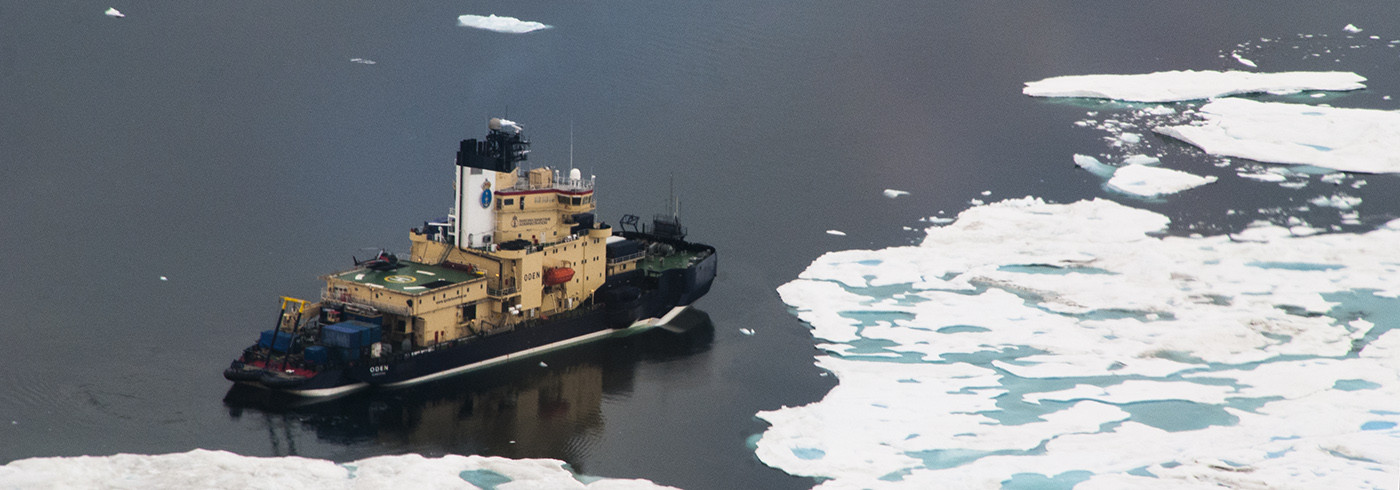The Arctic is remote, far from most of human civilisation but disproportionately important on our warming planet. The central Arctic is only rarely touched directly by any human, but rising CO2 and long-range pollution are changing the delicate balance between the sea, atmosphere and ice.
The aim of the Arctic Ocean 2018 expedition is to study this gigantic system from the inside, by drifting in the pack ice for five weeks on the icebreaker Oden and making observations through the end of the summer and the start of the autumn freeze-up period. There will be many scientific teams on board, with expertise in physical, biological and chemical ocean and atmospheric science. The overall focus is studying how the Arctic system works now, but the ultimate aim is to understand how it may change in the future.
Clouds control the energy budget
The key to understanding this environment is energy: the balance between the energy coming in from the Sun, that lost from the surface, and its distribution in between. This is why the critical focus on this project is on the clouds – the presence, thickness and type of Arctic clouds in summer is still poorly understood, but it is the clouds that control the energy budget. They are generally mixed phase (a mixture of water droplets and ice crystals), with a complex structure. Cloud formation is linked to the ocean, because it seems that material ejected from the ocean may be an important source of cloud condensation nuclei and ice nucleating particles, tiny particles which are necessary for clouds to form. In turn, the clouds will affect the ocean, by mediating the energy flow to and from the ocean surface. The ultimate source of the chemicals that form those important particles is likely to be ocean life, and so the expedition must include biological studies, as well as physical and chemical observations.
To study this interlinked and complex system, scientists will make observations from three major areas: from the ship itself, from the large ice floe we will be moored against, and from other ice floes a few miles from the ship.
The movement of water and ice will be studied using remotely operated underwater vehicles, buoys, acoustical devices for measuring currents, and observations of ice movement. Other monitoring stations will also follow the changes to the ice as the season progresses. The physics driving the production of bubbles in the gaps between ice floes will also be studied, along with the bubbles themselves and the particles they produce as they burst at the ocean surface. Other teams will measure and sample the microbiology in the water, taking samples back to the ship to test their response to changing physical and chemical water conditions. The sea surface microlayer, with its distinctive chemical and biological features, will be sampled directly so that its composition can be analysed. The effects of increasing CO2 levels on the ice and nearby biology will also be tested in shipboard experiments. Methane and CO2 fluxes from the open leads will also be measured.
In the atmosphere, extensive sampling of aerosols particles and gases will be carried out, using samples collected at the ship and from balloons. The structure of the atmosphere and the local clouds will be measured from balloons and using remote sensing technologies – LiDAR and radar. General weather measurements will be carried out continuously.
A foundation for better weather and climate models
This extensive data set will allow the scientists to address many questions about the links between the various parts of the atmosphere-ocean-ice system. The biggest questions concern the link between ocean microbiology and cloud structure, and the feedback mechanisms connecting all the components together. One of the reasons that these are still open questions is that comprehensive observation expeditions like Arctic Ocean 2018 are fairly rare, and we have relatively little data from the central Arctic to base our understanding on. This expedition offers a valuable opportunity to monitor many interlinked parts of the Arctic weather and climate simultaneously, providing a rich data set which will be the foundation for better weather and climate models.

